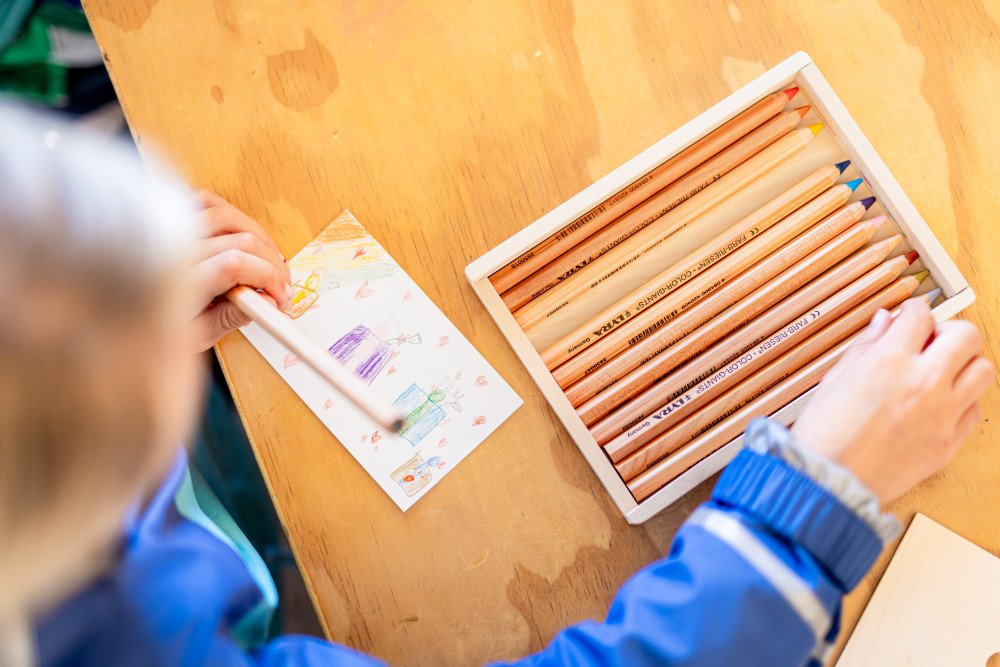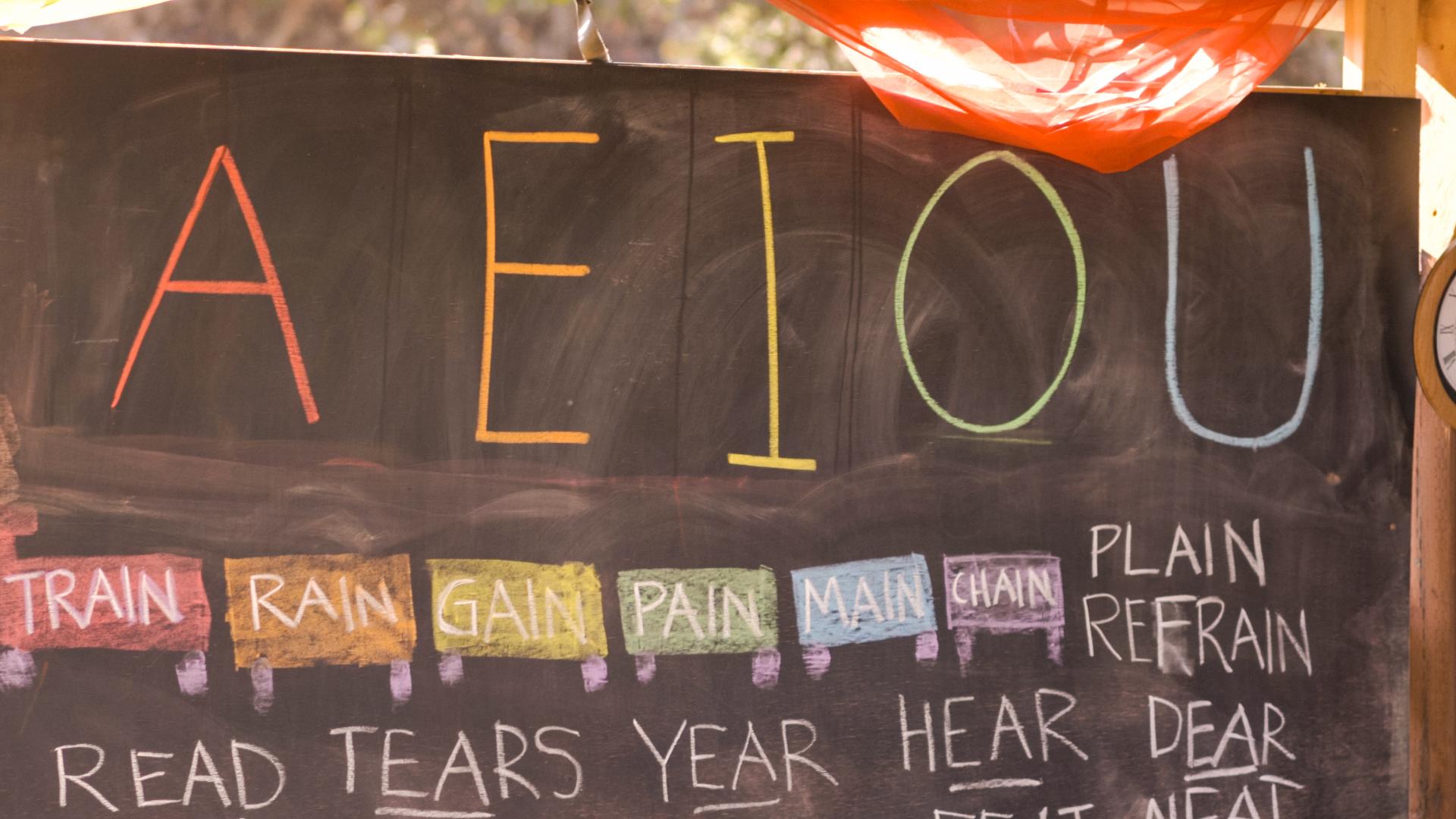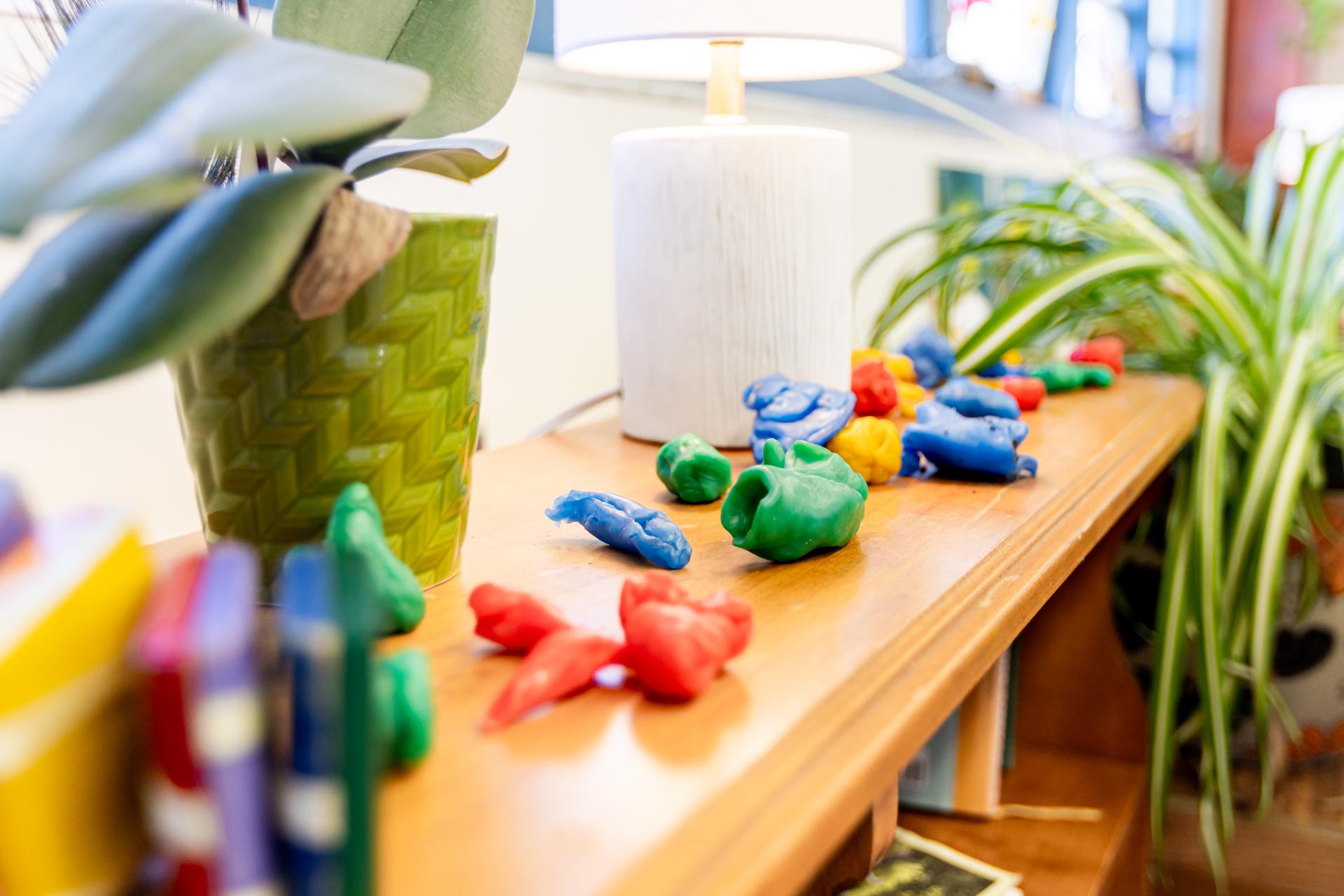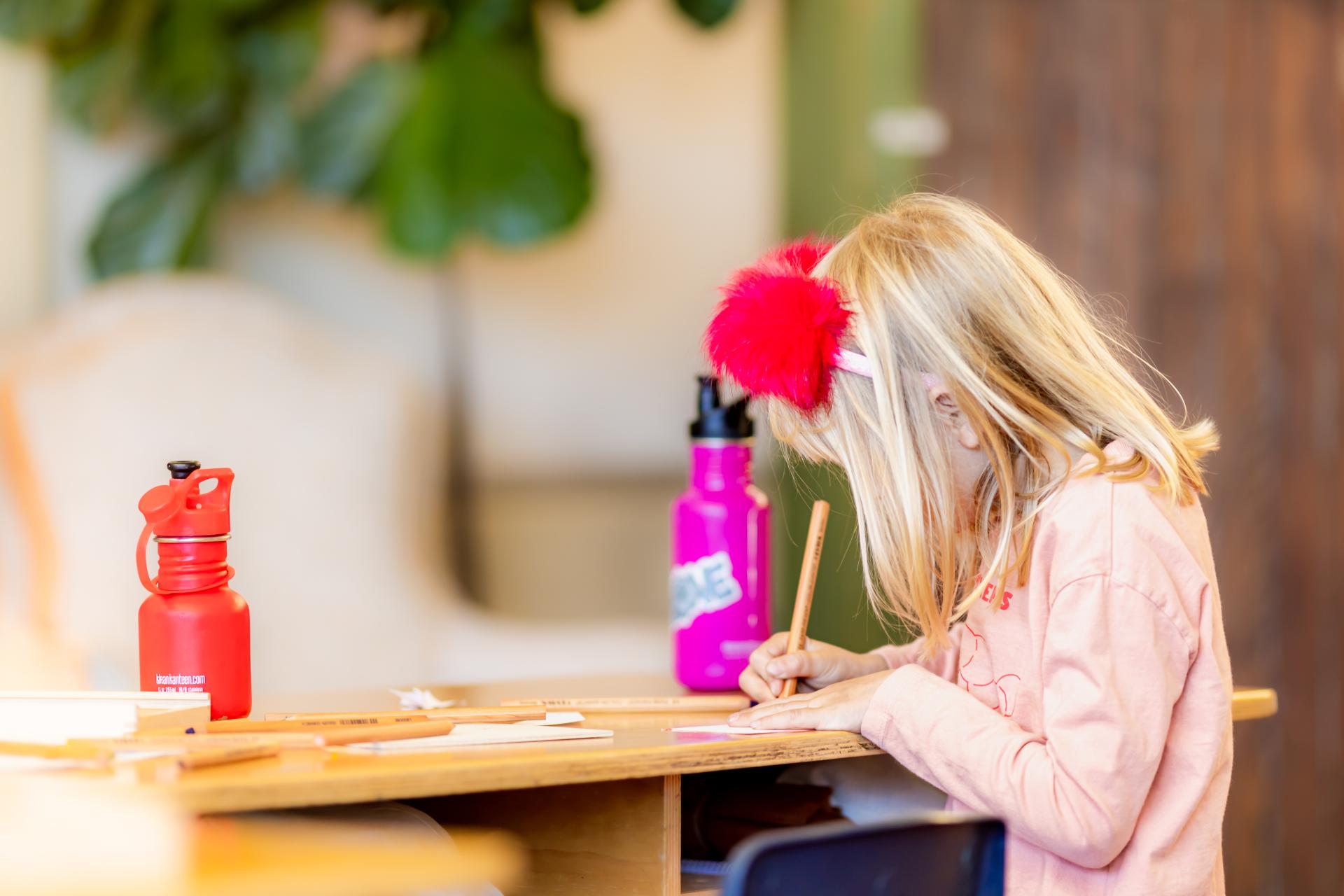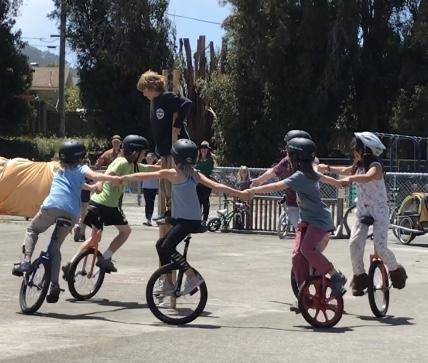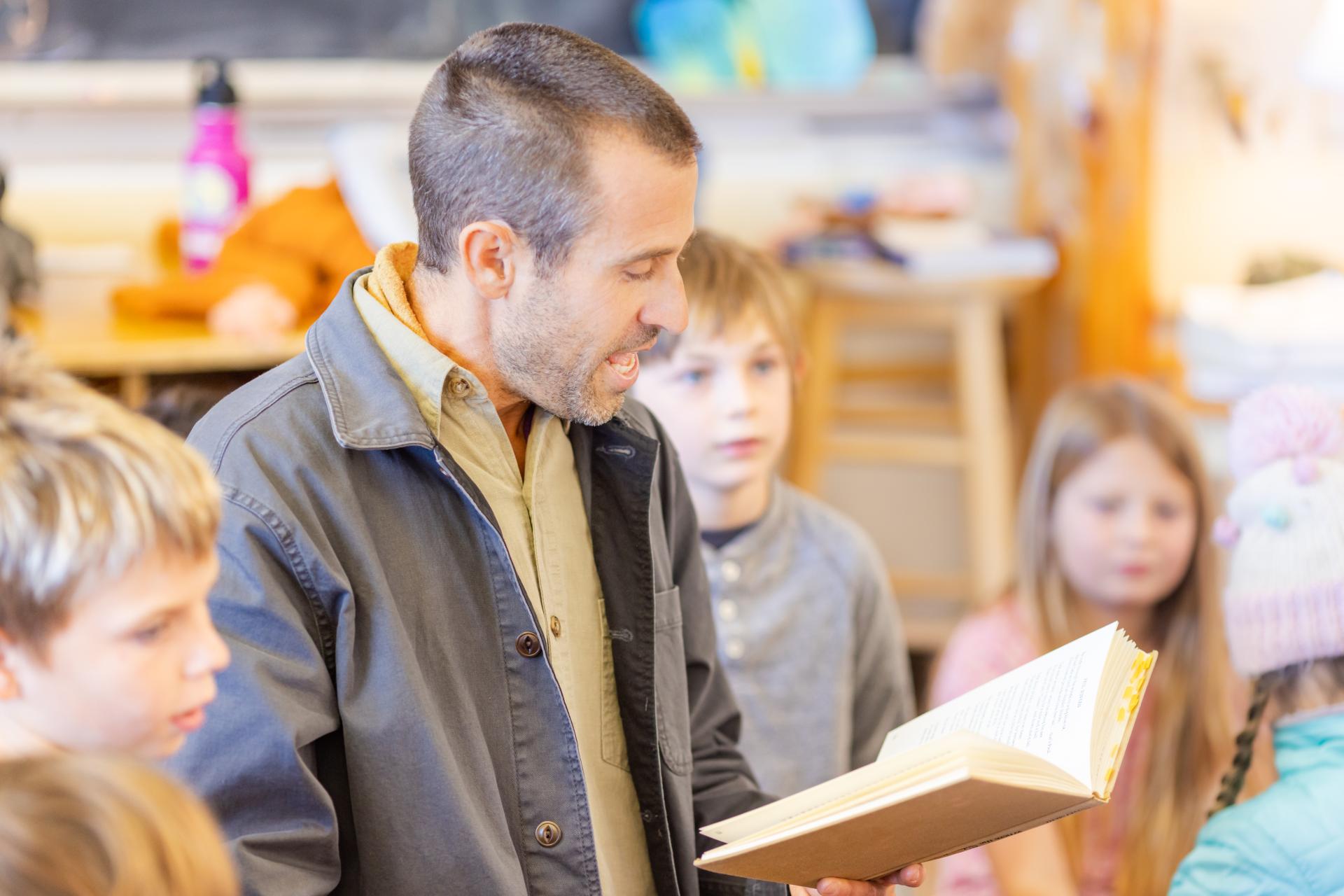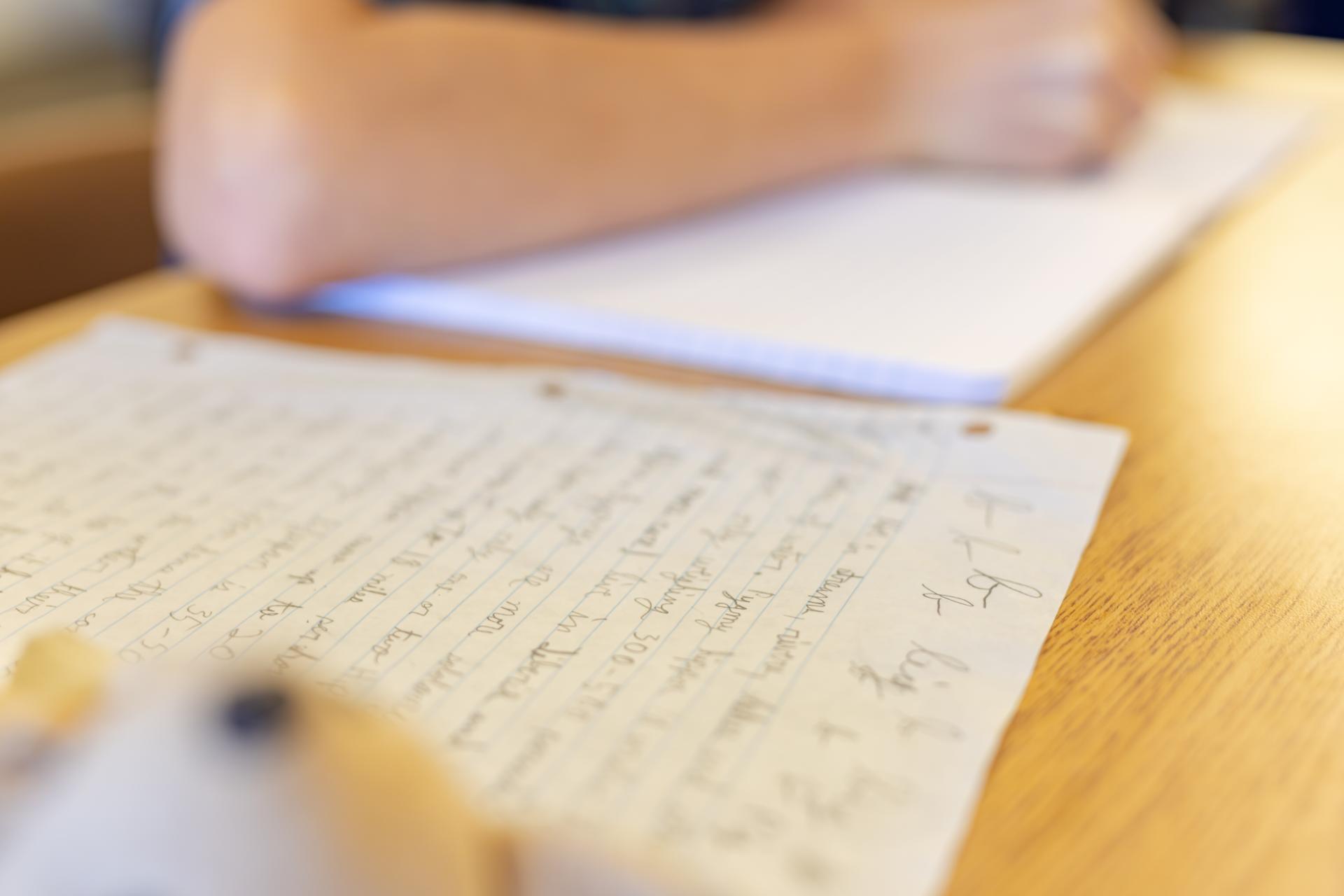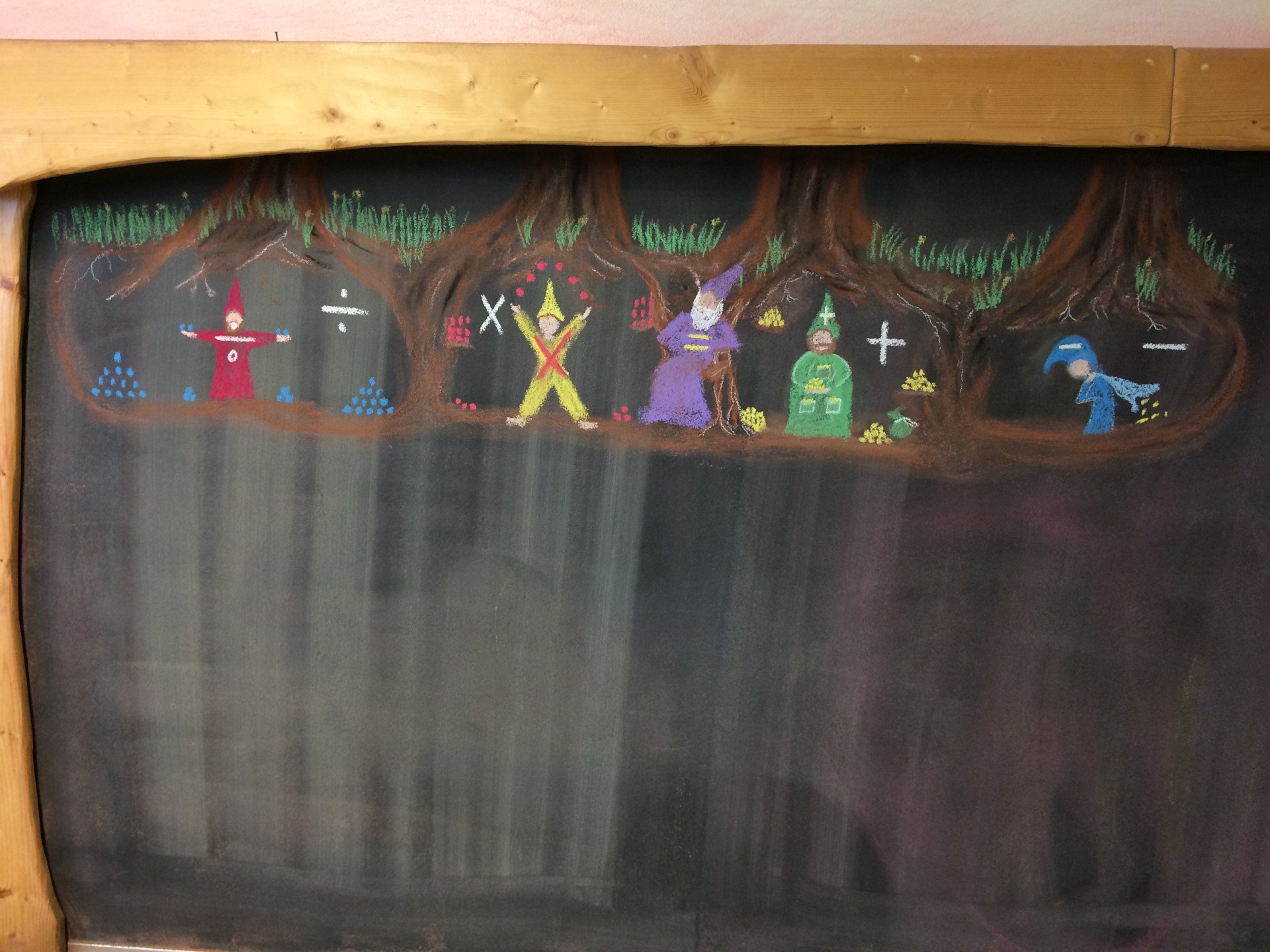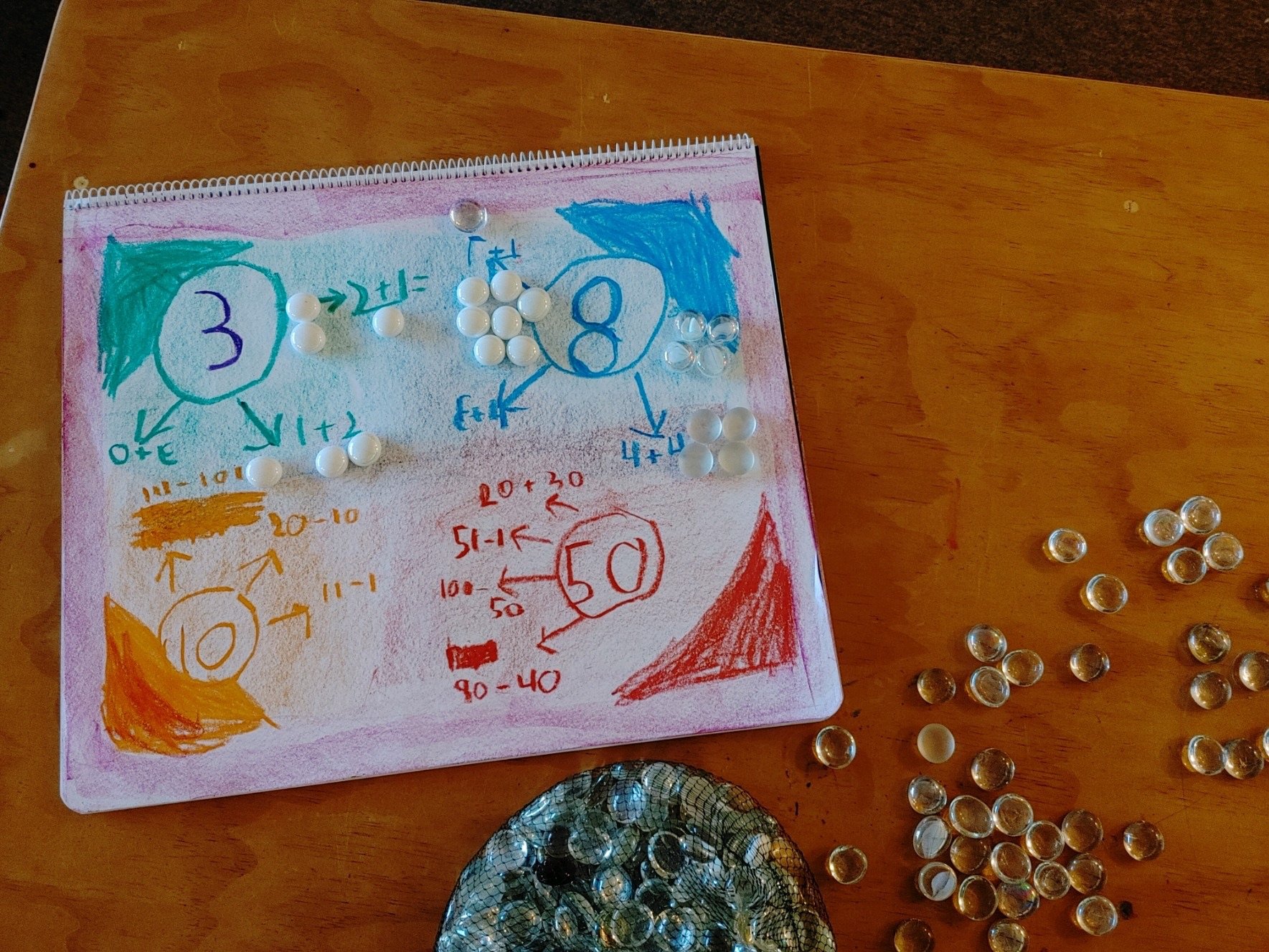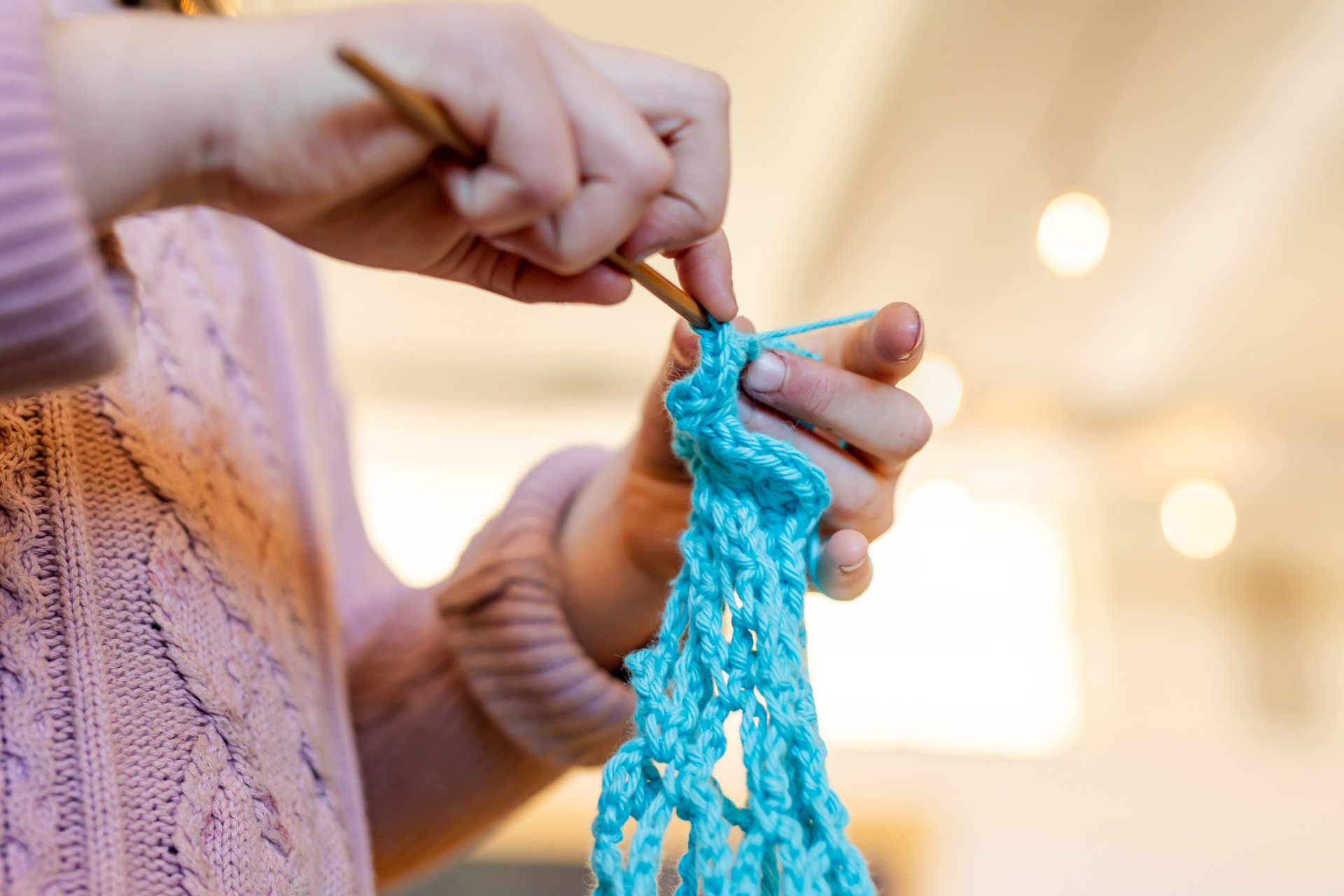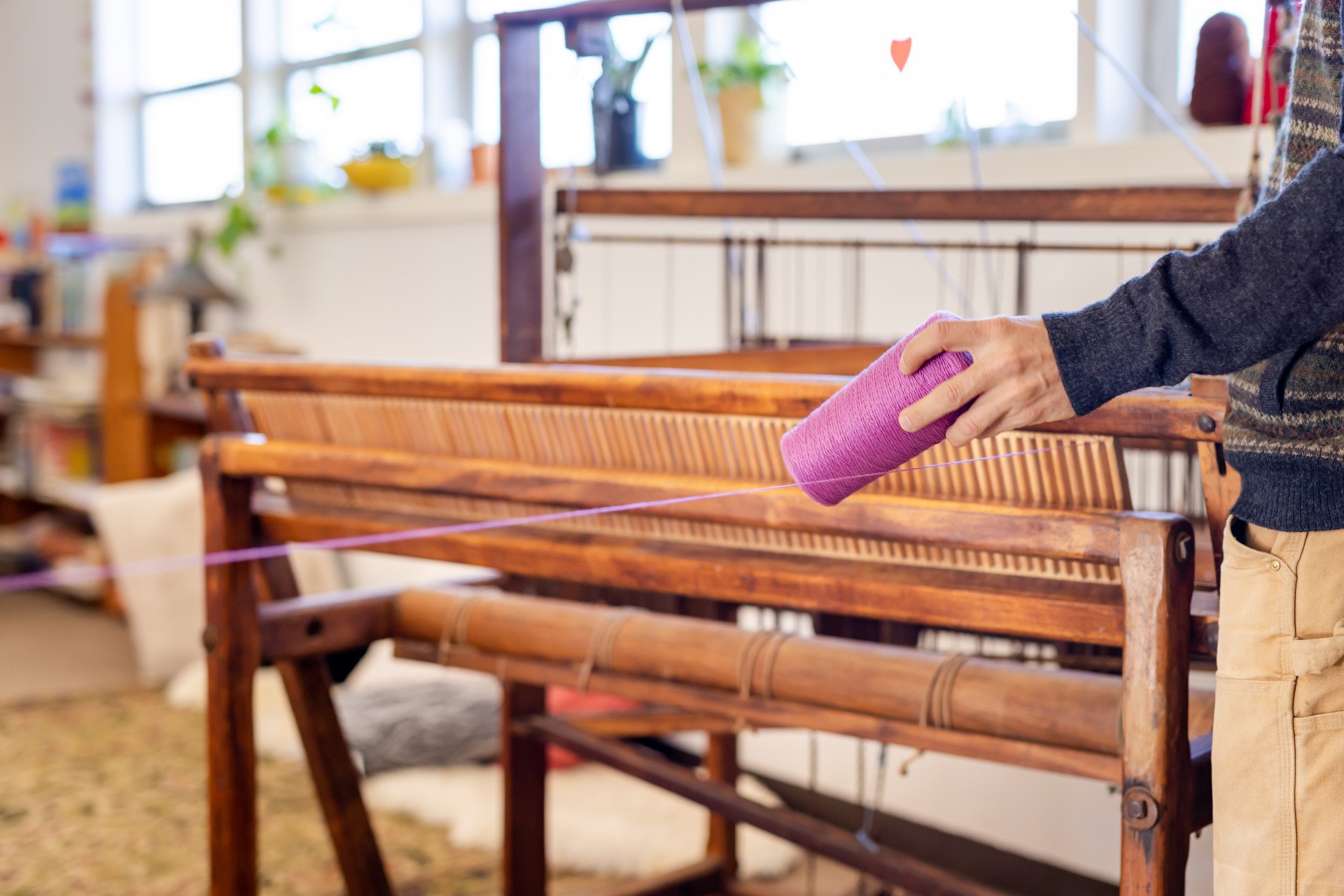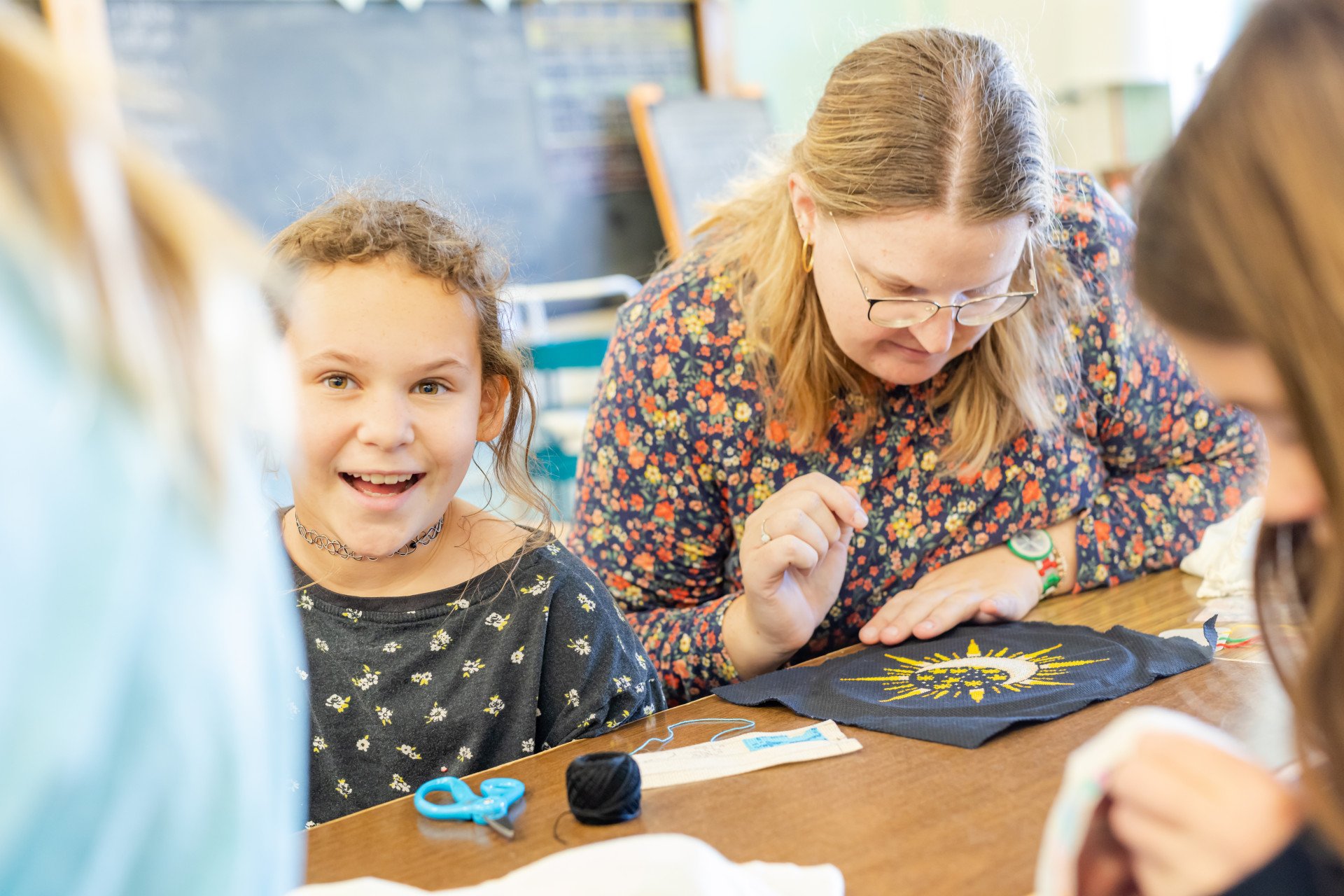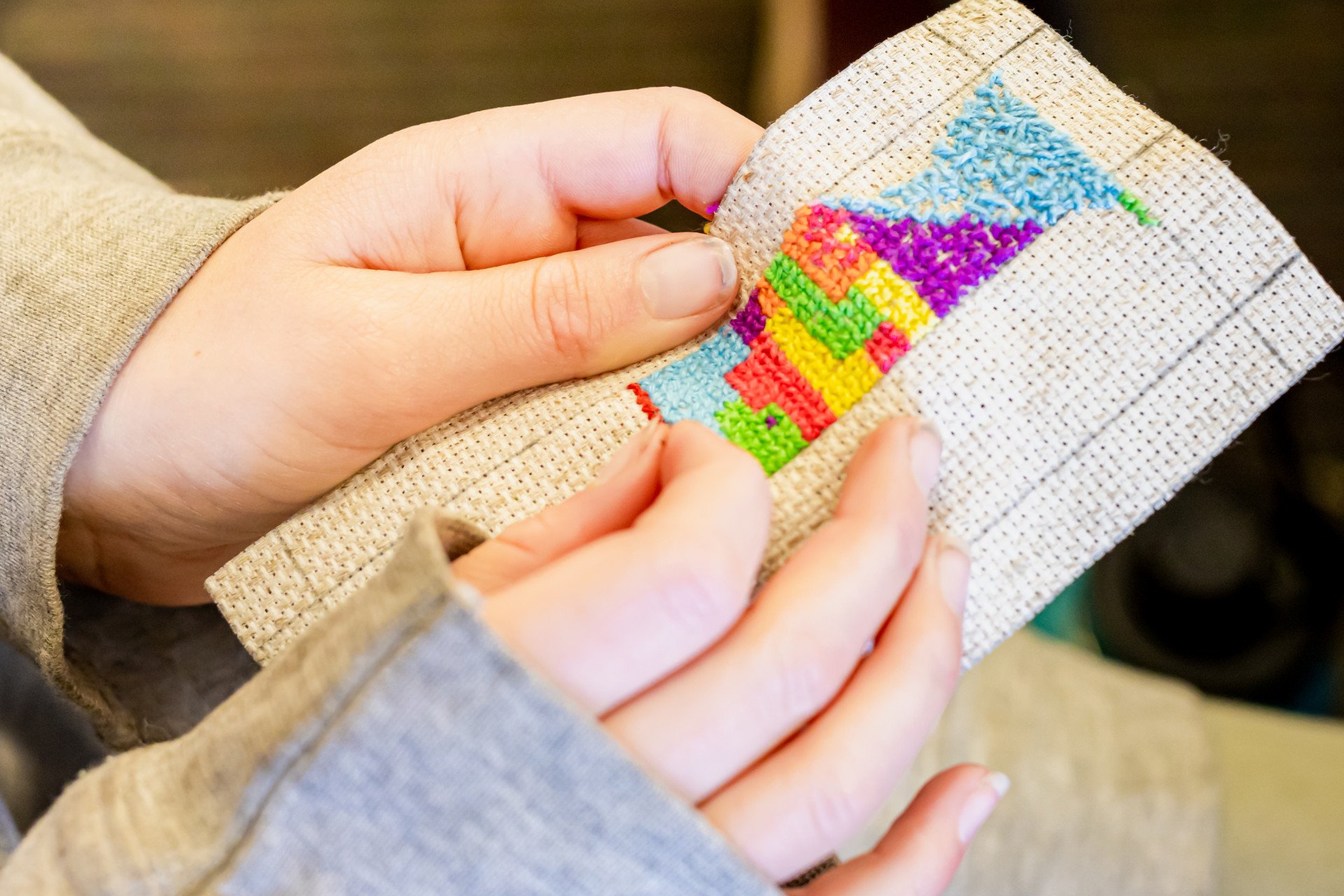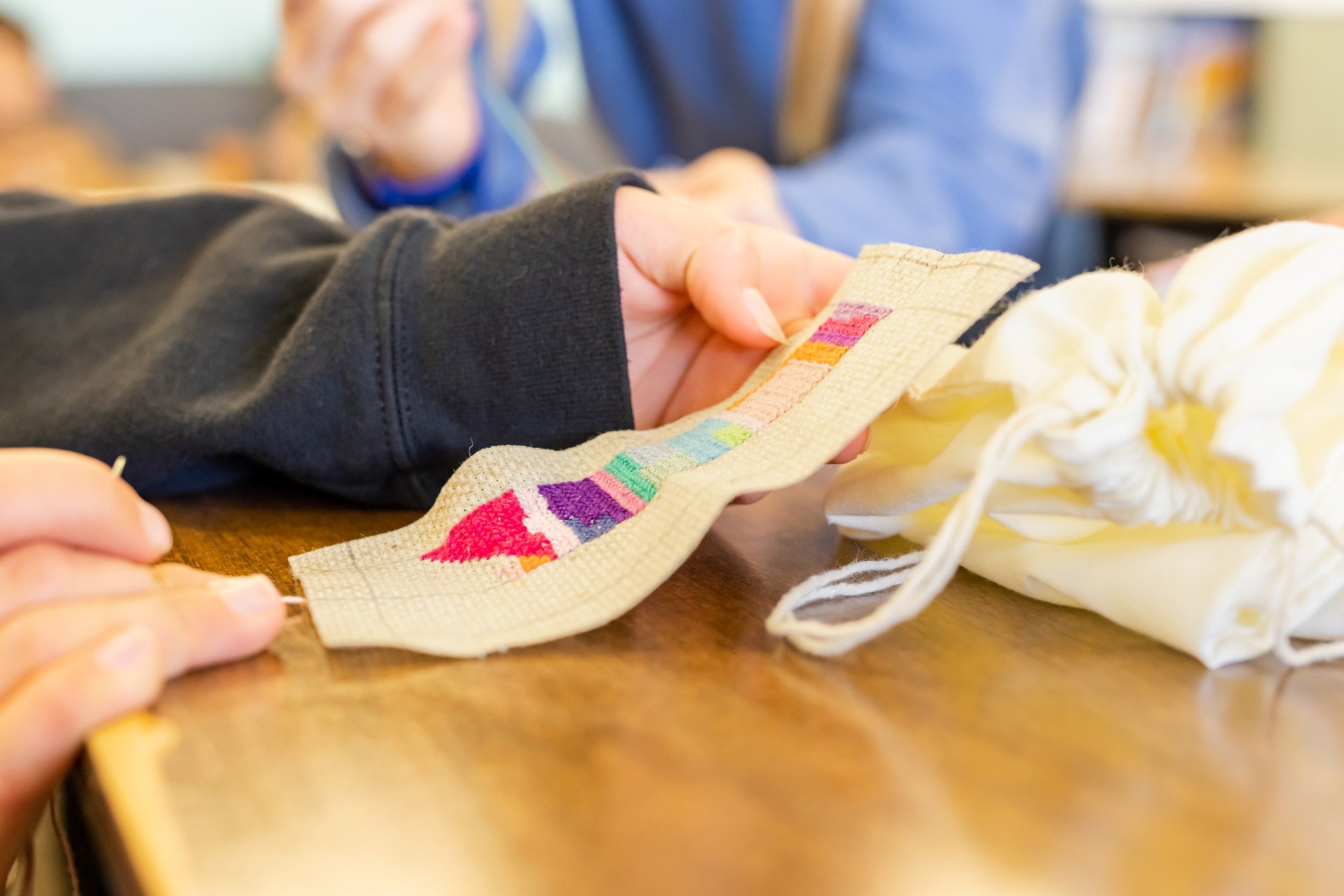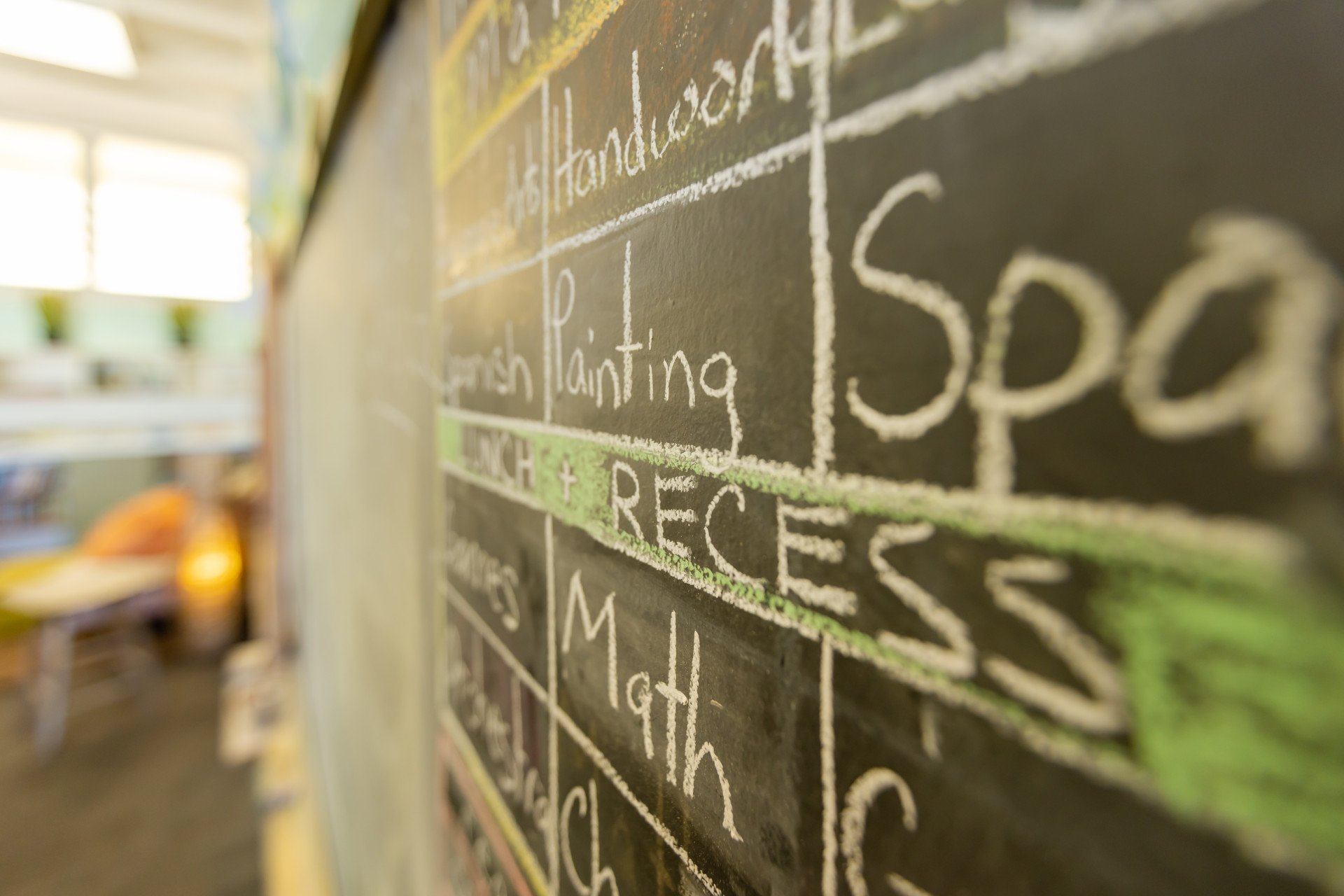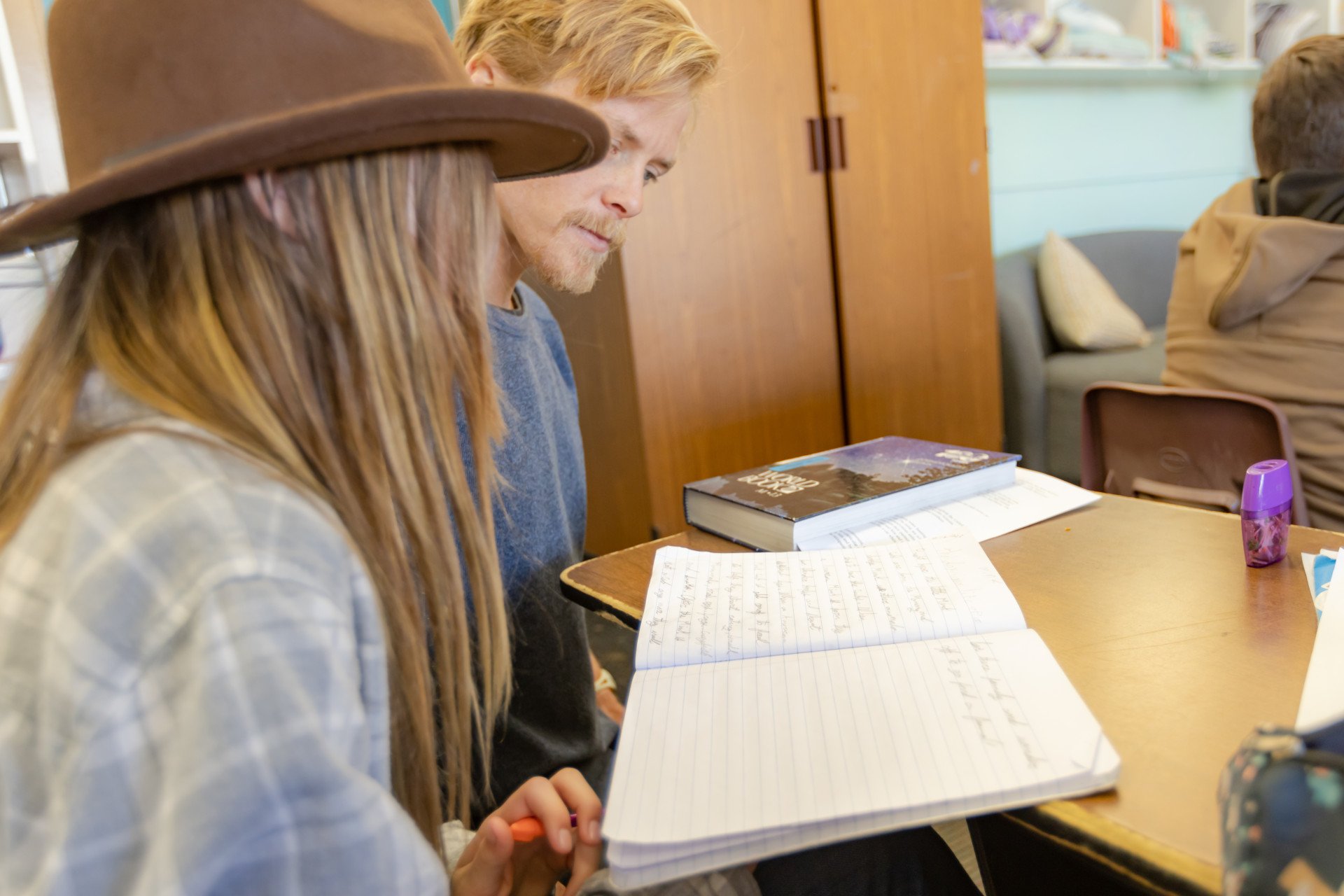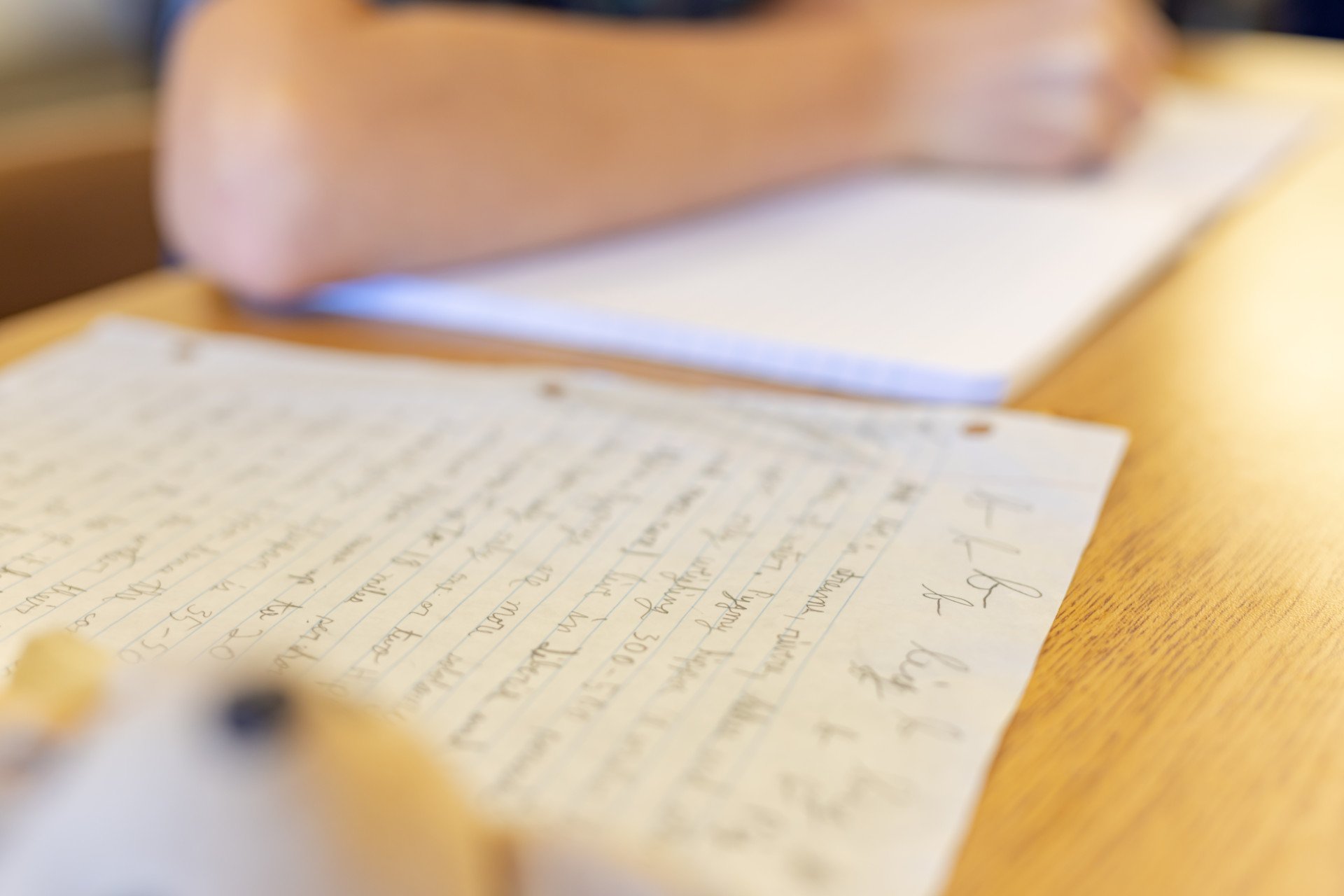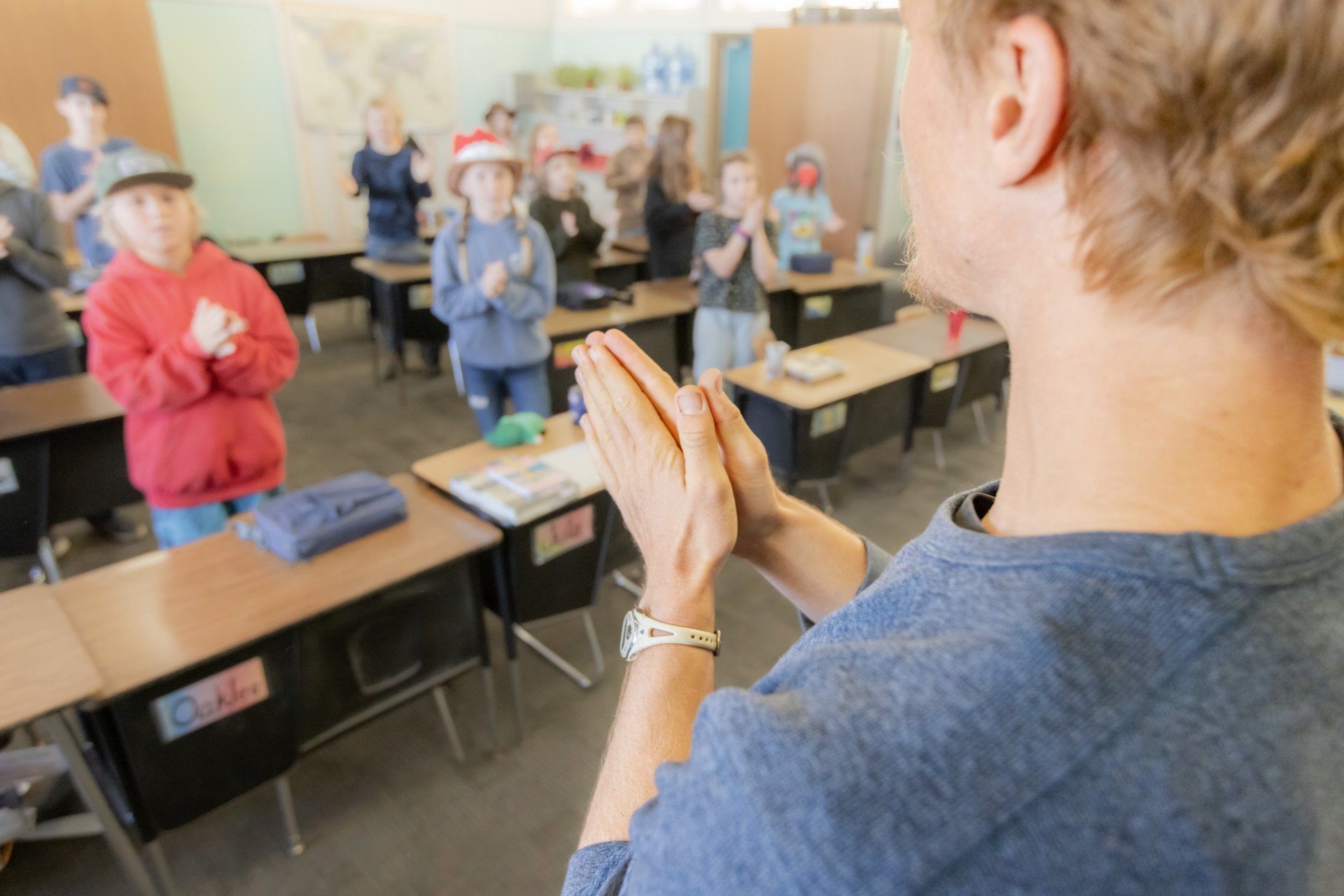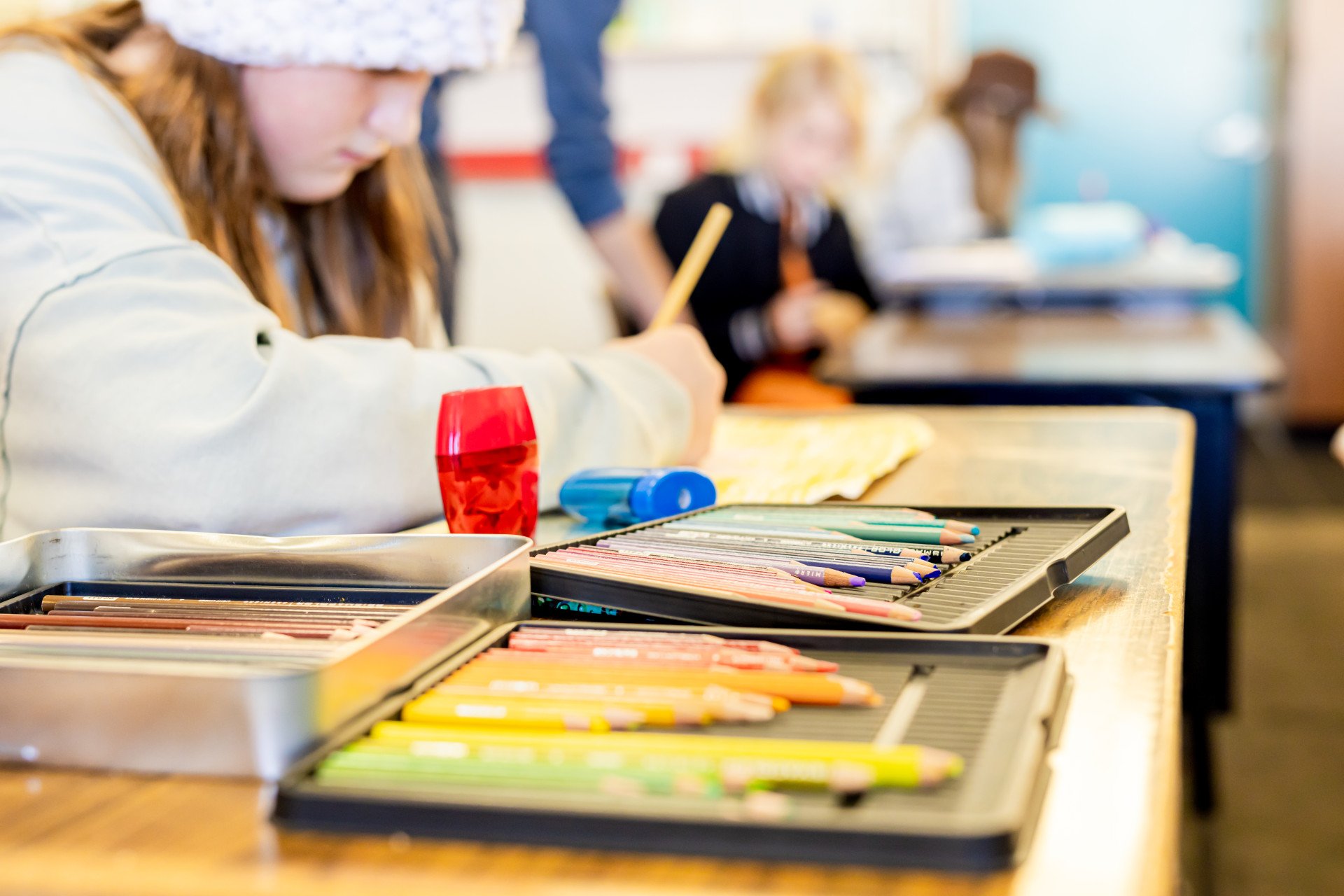First Grade
Meet the Teacher
Time to work, play and rest.
In this year, the child makes the important transition from Kindergarten to school, where they begin formal learning. The Language Arts curriculum includes the learning of forms, sounds, and sequencing of the letters of the alphabet through the use of storytelling, movement, poems, and verses. The literature used for the lessons is usually based on Fairy Tales from around the world and Nature stories. Mathematics in class one is taught in a holistic way. The children glean a number ‘sense’ through counting, clapping, and stomping. They first learn the qualitative aspect of numbers 1-12. They then are introduced to the four processes of math through lively characters, created by their teacher, who embody the qualities of the processes themselves. For instance, King Plus is a jolly, benevolent fellow who loves to collect things. The children practice the skills they have learned throughout the year.
During this first year, the class learns the good habits of classroom life and work. Cultivating reverence for nature, care for the environment, respect for others, interest in the world, and a feeling of confidence in their teachers, these are the moral aims for Class One. The teacher aims to lead the children into becoming a socially cohesive group who care for and listen to each other.
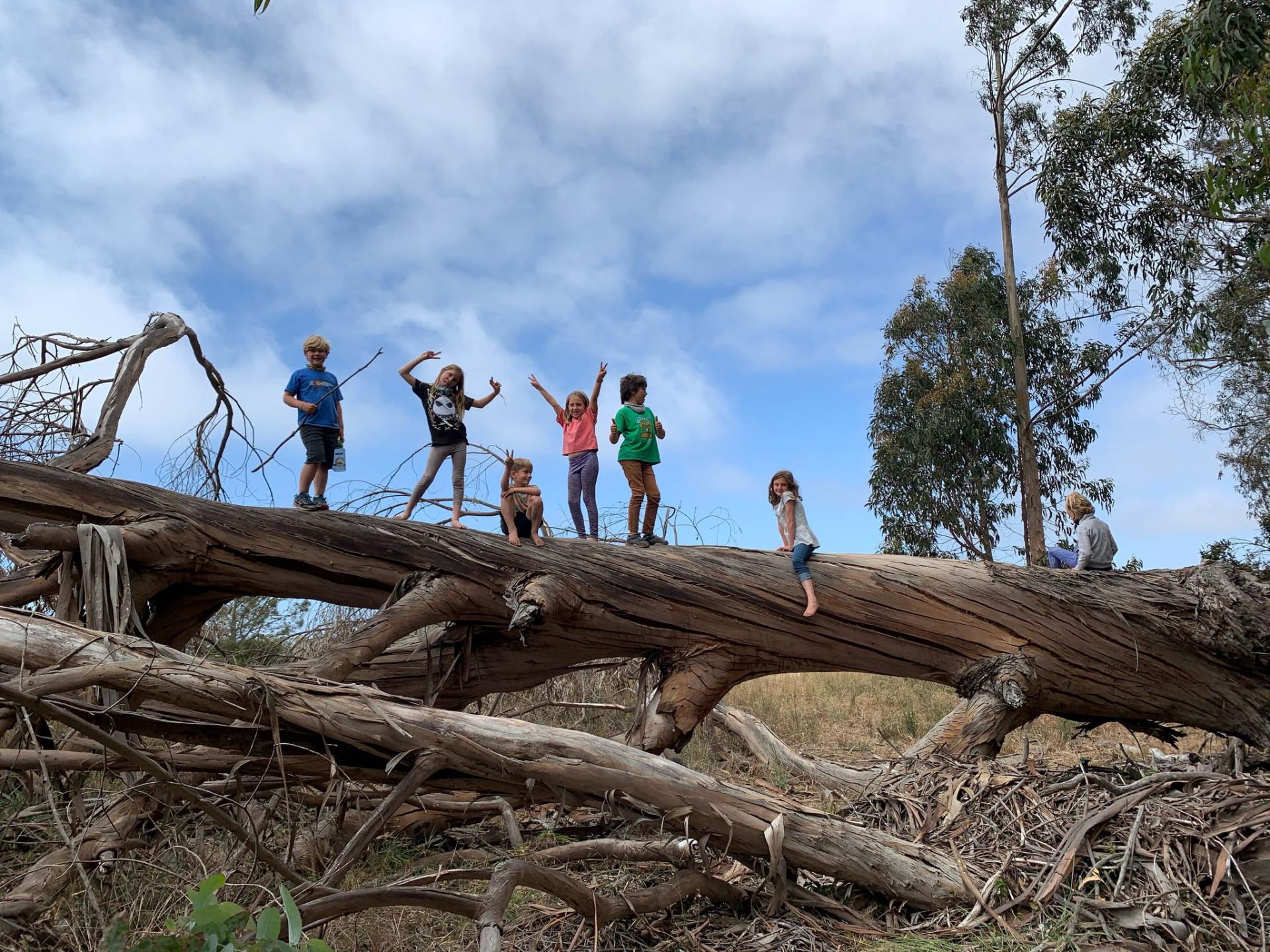
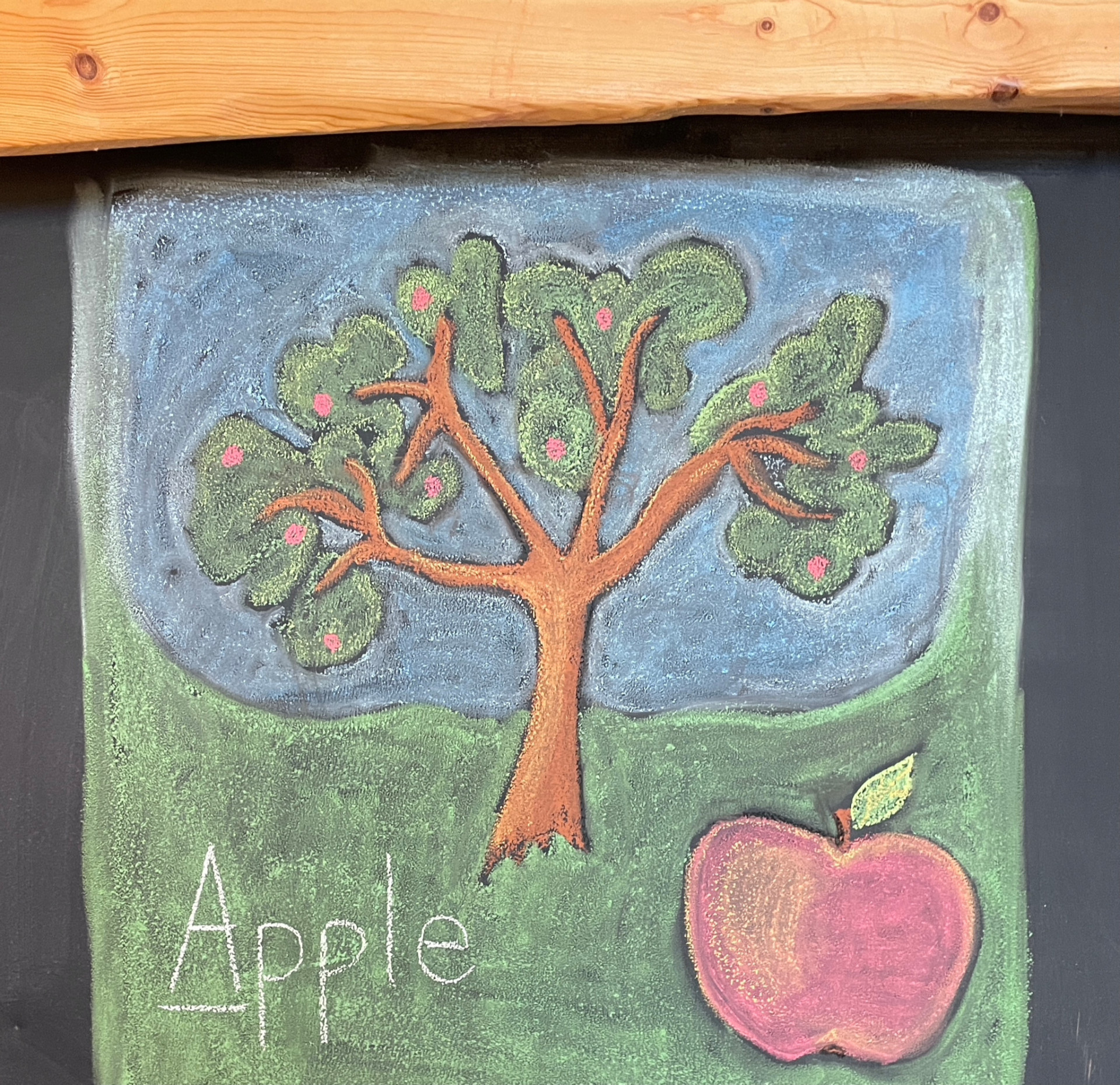
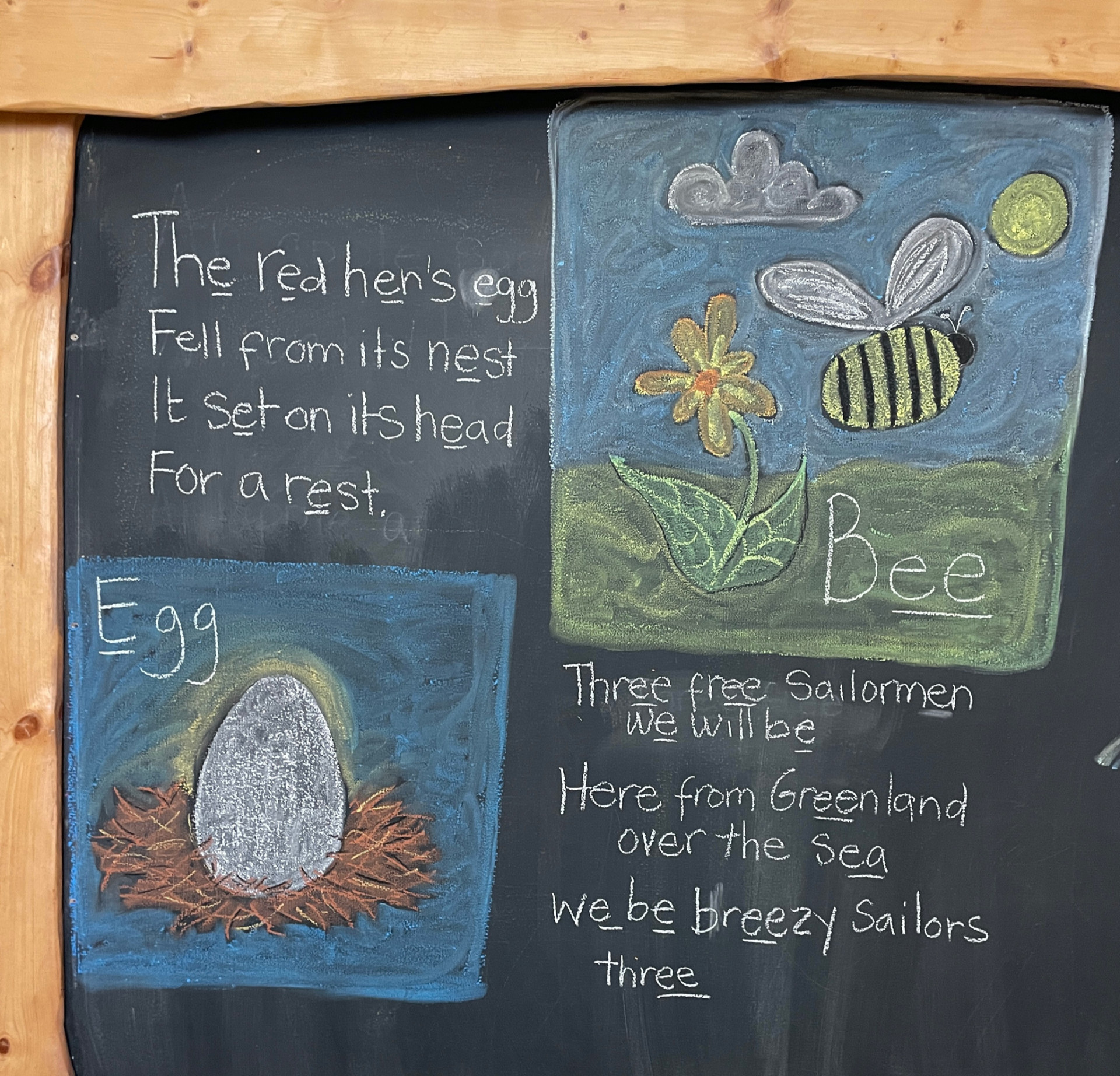
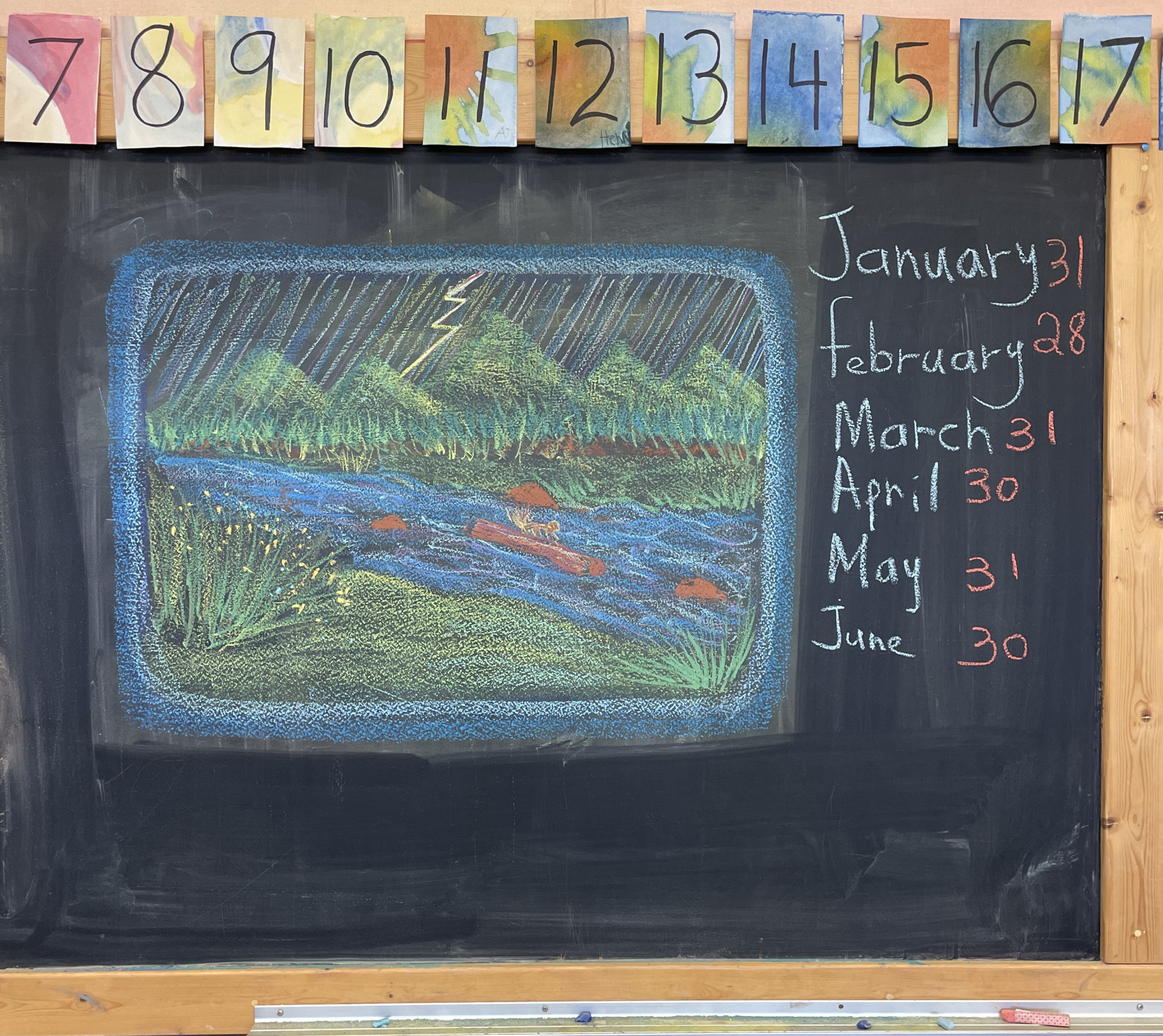
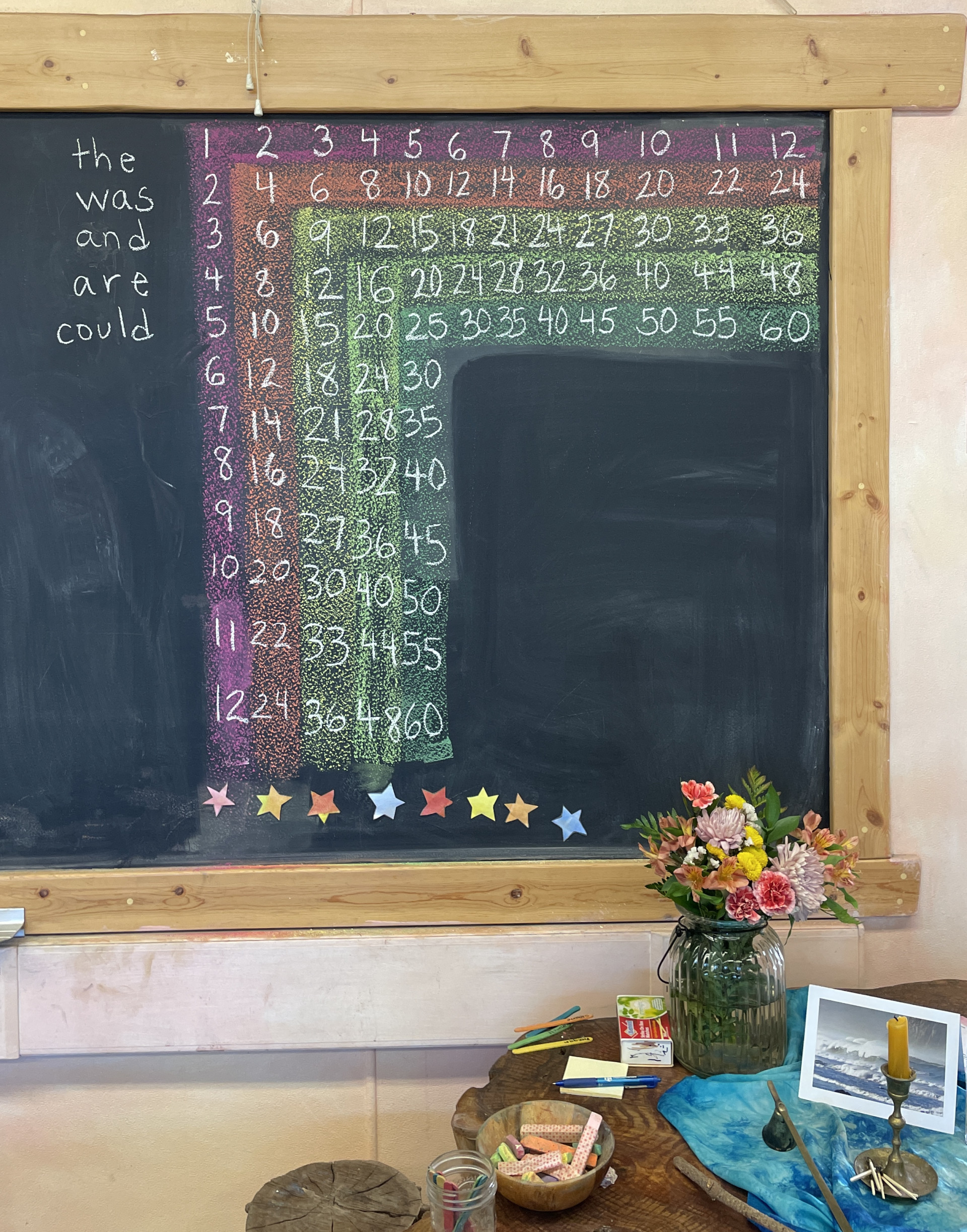
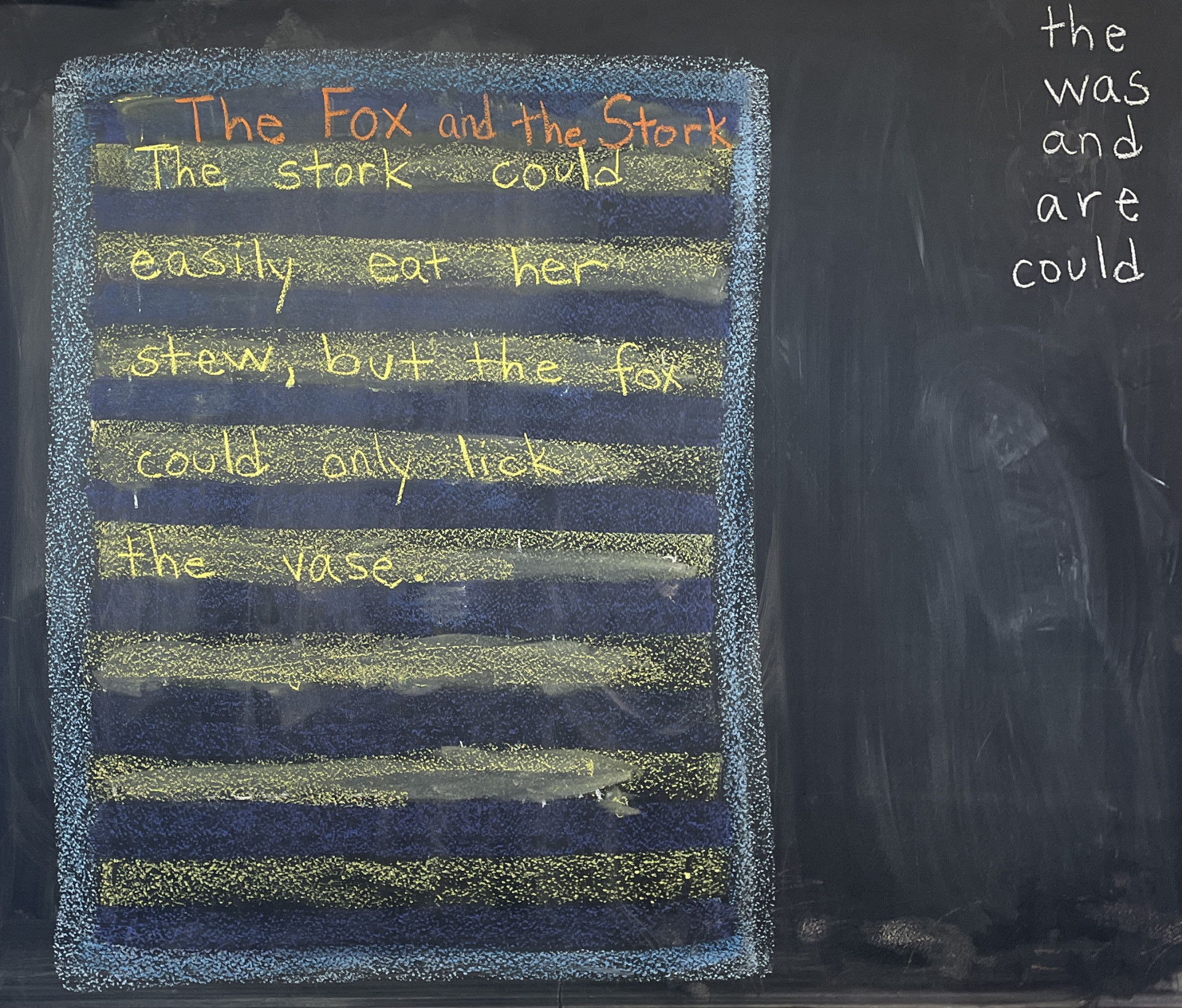
Second Grade
Meet the Teacher
Awareness of others and ourselves
The content of the Second Grade curriculum serves to cultivate in the child a sense for the breadth and richness of the language of the feelings and emotions. Fables from around the world serve this purpose perfectly. For in the fables lies moral teachings that are age-appropriate. At this age, the child is looking for right and wrong in the world; the animals are excellent players for these lessons. The teacher also draws on stories of great people who have overcome hardships, such as saints and heroes. Additional language arts support can be derived from local and global indigenous myths and legends. The children expand their knowledge of the letters into words, sentences, phrases, and poetry. They begin to read their own writing and many simple readers.
The mathematics curriculum includes the teaching of place value and the children can work with the four processes with larger and larger numbers. During this year, the times tables are brought into the child through a number of modalities to instill and build an "intuitive" knowledge of these crucial math facts. Basic skills advance with concepts of carrying and borrowing; early "word problem" skills are introduced by integrating math predicaments into storytelling. Mental math gets some encouragement, as does the earliest skills in writing mathematically.
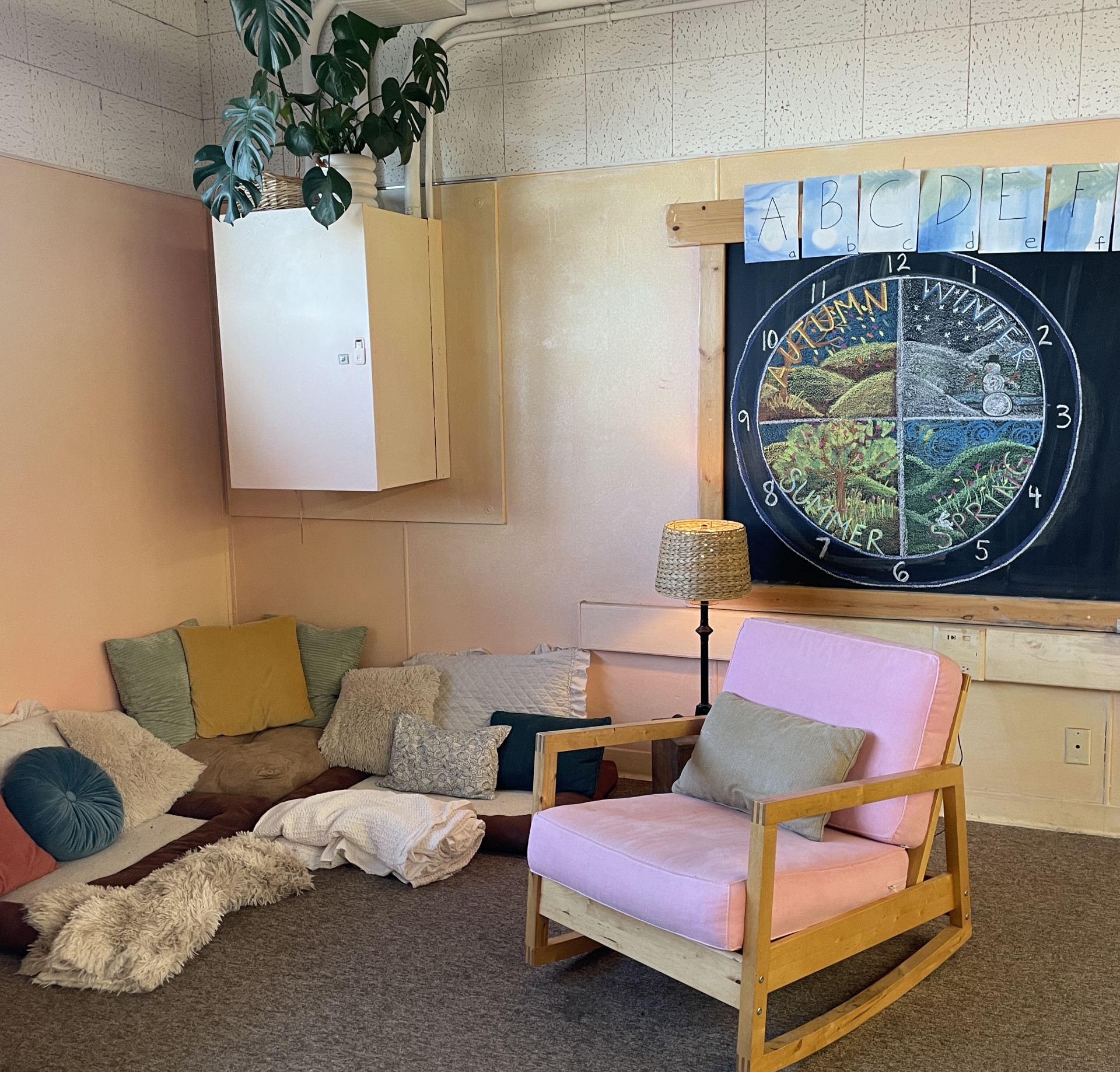
Third Grade
Meet the Teacher
Finding self through direct experience
After the children turn 9, the experience of their world loses some of its magical quality; they begin to wonder about the origins of things -- themselves included! The curriculum, again, meets them beautifully. They learn about how people throughout history have sheltered themselves, clothed themselves, and fed themselves. They hear creation stories from around the world and stories of the Hebrew people and their struggles. This allows the children to cultivate a feeling for the important work that we are here on earth to do. They learn practical life skills such as weaving, cooking, gardening, and agriculture. The reading, speech exercises, and writing expectations advance academically.
Mathematics also takes on a worldly aspect. During this year, application of the four processes branches out into the world through numerous projects, activities, and applied fields. At this age, the children are prepared and curious about the meaning of telling and communicating through time, from the clock to the calendar. Learning the practical basics of money and value provides opportunity for numerous engaging activities. Agriculture, cooking, and the 3rd Grade Shelter Project offer hands-on opportunity to explore the many forms of measurements and weights. Students build long division and advanced multiplication skills.
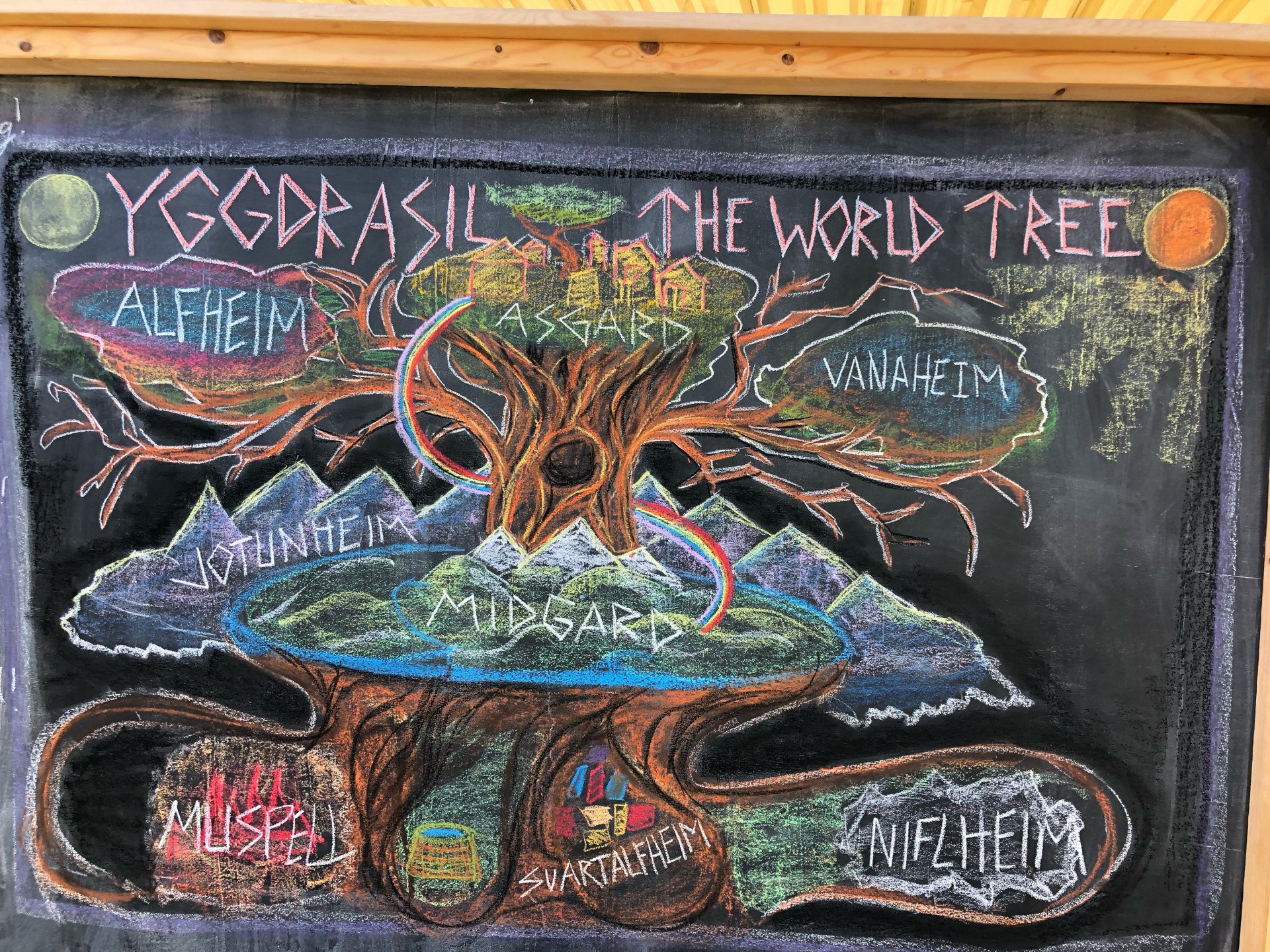
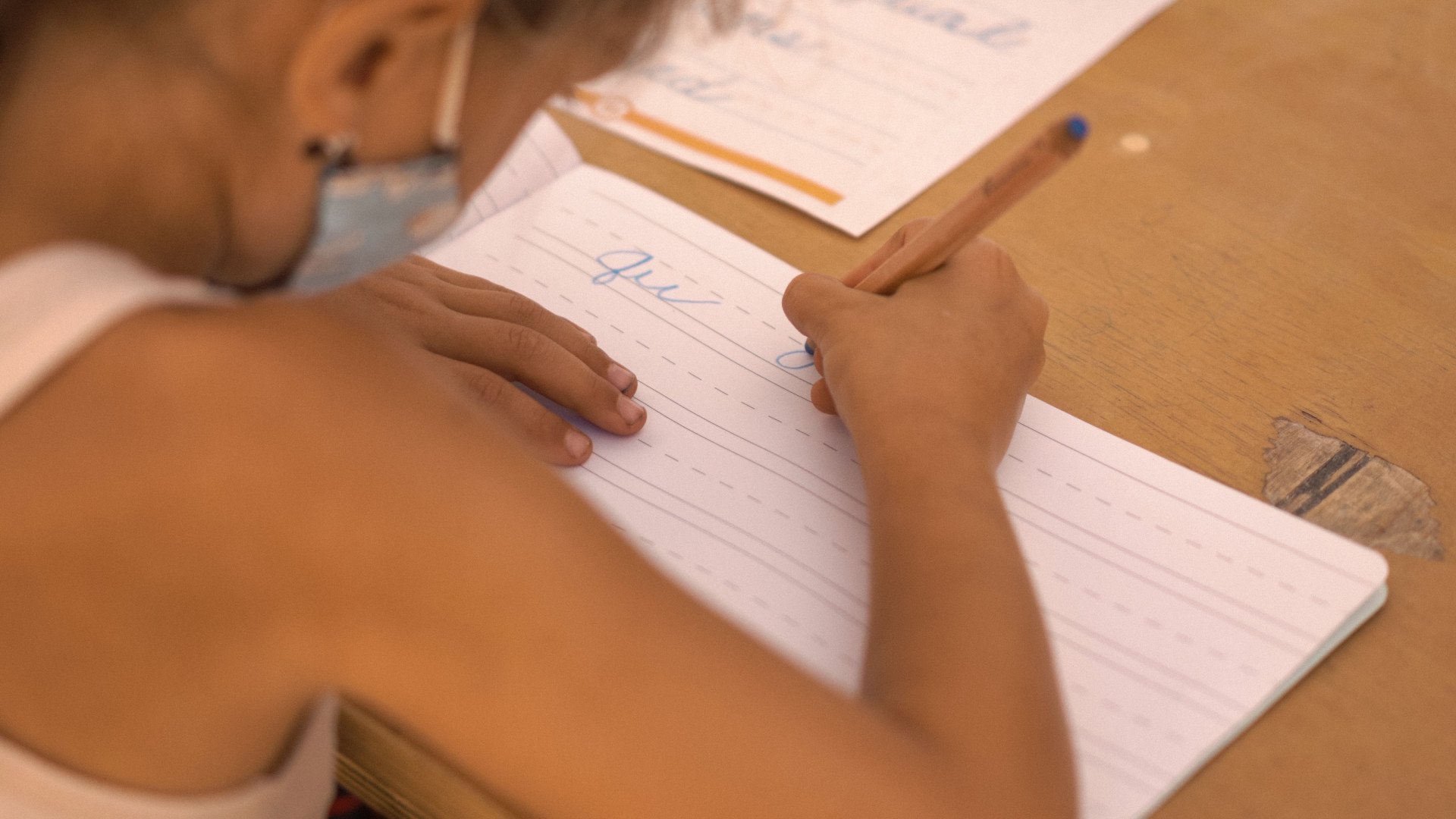
.jpg?v=1674449760103)
fourth Grade
Meet the Teacher
I have arrived!
The aim of Grade Four is first and foremost to challenge positively the powerful energy which the 10 year olds bring. The teachers aim to meet, through imaginatively presented lessons, the growing interest of the children in concrete areas of knowledge and to provide them with opportunities for more independence in their work.
The stories of the Norse Gods provide the rich fodder for the moral, social realm of development in that they offer tales filled with a multiplicity of characters, who reap and sow the consequences of their actions. The study of local Geography helps the child to form a sense of where they are in relation to their environment. A thorough study of map making begins to enhance the hands-on aspect of their geography lessons. A study of good earth stewardship also is initiated at this time. Natural science begins with a phenomenological study of the Animal Kingdom, in relation to the human being.
The world of fractions opens to the Fourth Grade student. Consistent with Waldorf practice, experience is the best first path to internalized learning and to open the door to the depths of conceptual learning. Going from the whole to the parts, from the world to the individual, from the delicious pie to the single serving, we find that this infinite divisibility surrounds us. Exploring with real (and sometimes delicious) world, we find that this divided whole easily gives way to the adding and subtracting of fractions. Going deeper, we can also divide up the world of numbers and initiate categorical thinking -- such as the mystery of prime numbers. Playing with fractions, we discover concepts like the least common multiple and the greatest common factor, for example. This gives us tools to then build into improper fractions. Story and world problems advance with us, which requires further development of our long division skills.
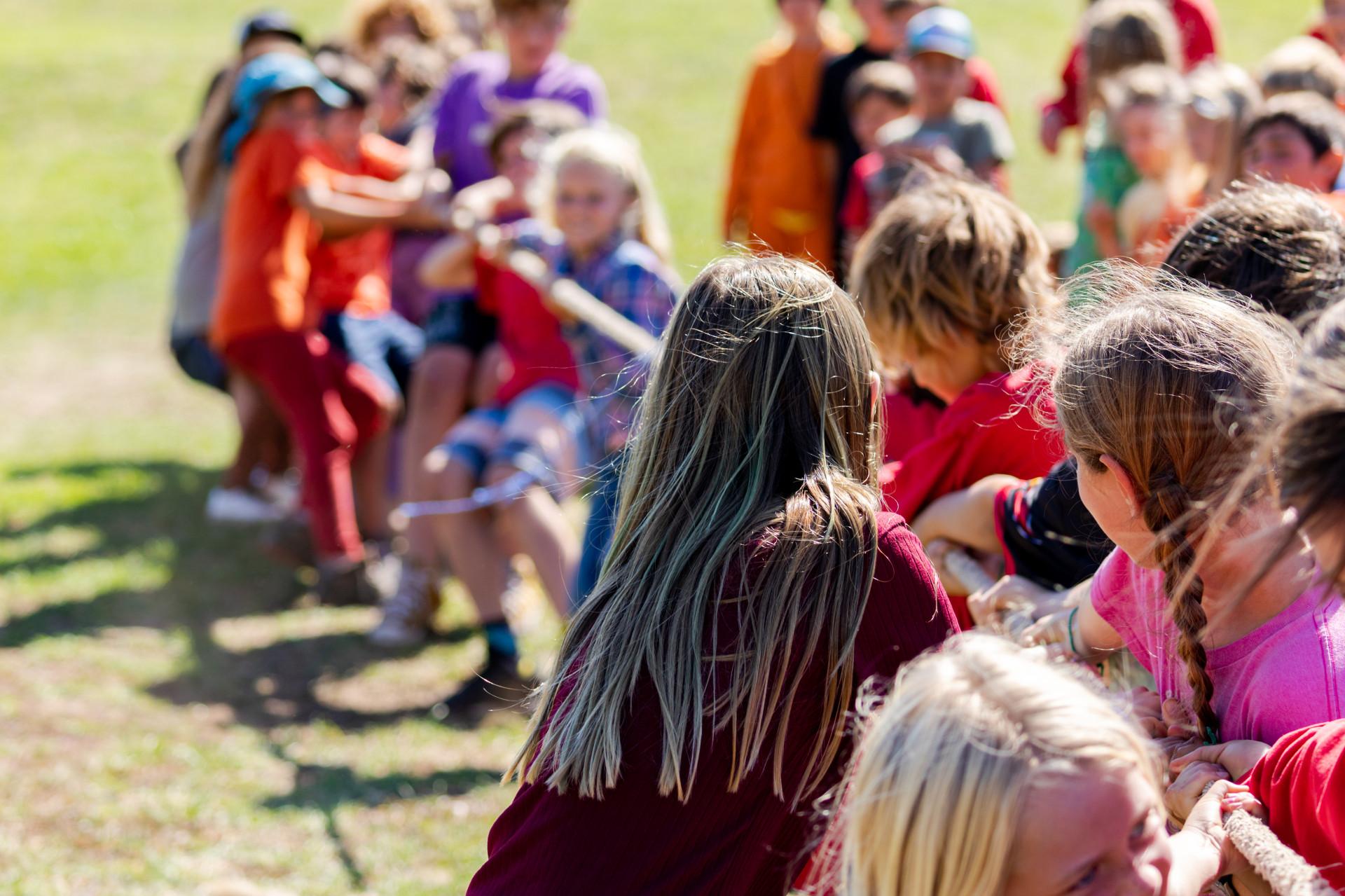
Fifth Grade
Meet the Teacher
The heart of Childhood
Fifth Graders are often referred to as being in the ‘Golden year’ of childhood. They are perched between childhood and puberty with a balanced, graceful approach to life. The aim of the lessons this year is to make the transition from myth to history and its emphasis on the individual.
The study of ancient history takes them to the beginnings of things like writing, paper making, drama, and poetry. They study Ancient India and Ancient Persia, with the question of what did these societies offer humankind? The Greek Myths metamorphosize into Greek History and the children delight in the stories. Through the study of Botany, the children develop a greater awareness of the interrelatedness of life and environment. The study of freehand Geometry illustrates this beautifully, especially when the geometry of nature is revealed. Geography lessons have moved out from the center of the child’s world, which is local, to the continent of North America. Map-making skills are honed. The mathematics classes include a thorough review of fractions and leap into the study of decimals. The concepts of Area, Perimeter, and Metric measurement are also introduced and practiced.
.jpeg?v=1674449272396)
_(1).jpeg?v=1674449289707)

